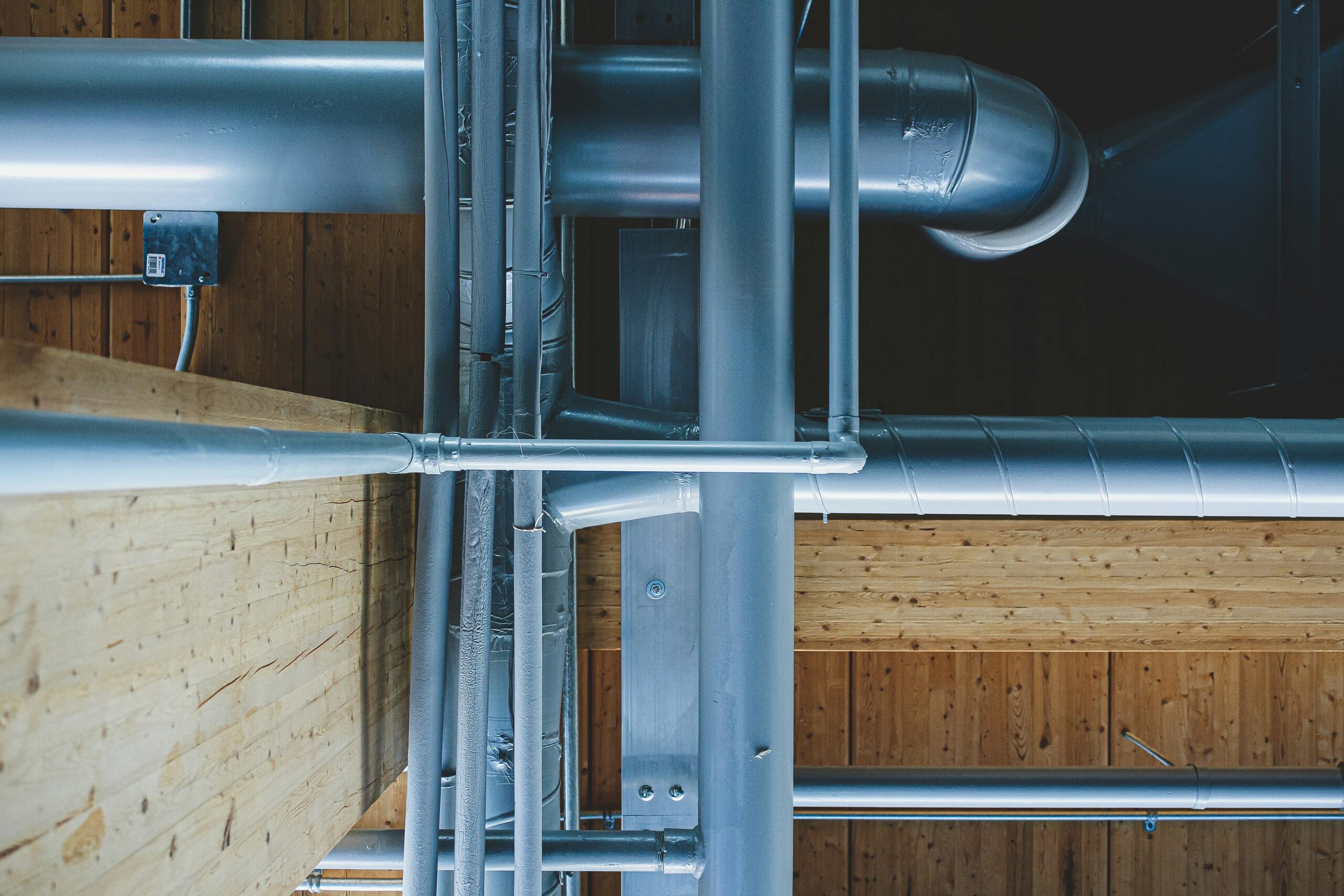The material of drain pipes in your home or business plays a significant role in determining the cleaning methods and tools you’ll need to use. Different materials, such as PVC, copper, cast iron, and galvanized steel, have unique properties that affect their interaction with various cleaning agents and techniques. It’s important to recognize that the durability, corrosion resistance, and smoothness of the interior surface of the pipe material directly influence the accumulation of debris and the ease with which it can be removed.
For instance, PVC pipes, being non-corrosive and smooth, tend to build up less waste and are easier to clean with simple techniques like plunging or using chemical drain cleaners. Conversely, metal pipes, like copper or galvanized steel, may require more cautious approaches due to their susceptibility to corrosion over time, especially when harsh chemicals are used. Understanding the composition of your drain pipes is essential in selecting the most effective cleaning process, ensuring that you not only achieve a clear drainage system but also maintain the integrity of the pipes for long-term use.
Choosing the correct cleaning technique also extends the lifespan of your drainage system by preventing unnecessary wear. Mechanical methods, such as drain augers or hydro-jetting, might be preferred for tougher blockages or more resilient pipe materials. It’s crucial to match the cleaning process with the pipe material to avoid damaging your plumbing while effectively clearing out any obstructions. By staying informed about your drain pipes’ material, you can optimize the cleaning process, save on maintenance costs, and prevent the headache of emergency repairs.
Materials Overview
The material of your drain pipes is a critical factor in determining the suitable cleaning method and strategies to maintain their functionality.
Metal Pipes
Metal pipes, including stainless steel, copper, and galvanized steel, are known for their durability and resistance to heat. However, they can be prone to corrosion and scaling, which requires the use of non-corrosive cleaning agents to prevent damage.
Plastic Pipes
PVC (polyvinyl chloride) and ABS (acrylonitrile butadiene styrene) are common types of plastic pipes. Light and corrosion-resistant, these pipes often necessitate gentler cleaning techniques, as harsh chemicals can damage the plastic material.
Ceramic Pipes
Ceramic pipes are less common, but they offer excellent resistance to abrasion and most chemicals. Due to their brittle nature, your approach to cleaning should prioritize methods that minimize physical stress to the pipes.
Impact of Material on Accumulation
The type of material your drain pipes are made of significantly affects the rate and type of accumulation. Understanding this can shape your approach to cleaning and maintenance.
Corrosion and Scale
Metal pipes, particularly those made of iron or steel, are prone to corrosion and scale buildup. Over time, the interaction with water and other substances leads to rust and mineral deposits. These accumulations narrow the pipe’s diameter, restricting water flow and increasing the likelihood of clogs.
- Iron or steel pipes: Susceptible to rust-related scale.
- Copper pipes: Develops a protective patina, but still vulnerable to mineral buildup.
Plastic Adherence
Plastic pipes, mostly made from PVC or ABS, present different challenges. They don’t corrode, but oils, grease, and other sticky substances can easily adhere to the inner walls. This buildup can attract debris, leading to blockages.
- PVC and ABS pipes: Less prone to corrosion, susceptible to grease and oil adherence.
Ceramic Smoothness
Ceramic pipes boast a smooth surface, which impedes the accumulation of materials. However, they are not immune to all forms of blockages. Over time, sediment and other deposits can still form layers, albeit at a slower rate compared to other materials.
- Ceramic pipes: Natural resistance to buildup due to smooth surfaces.
Cleaning Methods by Material
The effectiveness of drain cleaning methods greatly depends on the type of material your pipes are made of. Specific techniques are designed to best suit metal, plastic, or ceramic pipes, ensuring both efficiency and safety during the cleaning process.
Metal Pipe Techniques
For metal pipes, such as those made of copper or steel, it’s essential to avoid corrosive cleaners that can cause damage. Instead, opt for:
- Mechanical cleaning: Utilize a plumber’s snake or auger to physically remove blockages.
- Mild chemical cleaners: Use environmentally friendly enzymatic solutions that break down organic matter without harming the pipes.
Plastic Pipe Strategies
Plastic pipes, often made from PVC or ABS, require gentle, yet effective approaches to prevent damage:
- Hot water flush: Pour hot (not boiling) water to dislodge grease and soap accumulation.
- Biological cleaners: Employ enzyme-based formulas that digest organic waste and protect the integrity of the plastic.
Ceramic Pipe Approaches
Ceramic pipes are durable but can be prone to surface damage. Maintain their condition with:
- Non-abrasive tools: Use a plunger or hydro-jet at moderate pressure to clear obstructions without scratching the pipes.
- pH-neutral cleaning agents: Select mild detergents that clean effectively without causing etching or deterioration.
Tools and Chemicals Used
The materials you select for cleaning your drain pipes should be compatible with the pipes’ material to prevent damage and ensure effective cleaning.
Mechanical Tools
For physical removal of blockages, you have several tools at your disposal:
- Plunger: This creates a vacuum to dislodge clogs.
- Drain Snakes and Augers: A flexible rod to navigate pipes and break up obstructions.
- Drain Brush: Ideal for scrubbing the inner walls of pipes.
Chemical Cleaners
Chemical cleaners are used to dissolve and remove build-up within pipes. Use them according to the pipe material:
- Caustic Cleaners: Contain lye or caustic soda, suitable for metal pipes.
- Oxidizing Cleaners: Contain bleach or peroxides, effective for organic blockages.
- Acidic Cleaners: Composed of sulfuric or muriatic acid, used for severe blockages, but must be handled with care.
Natural Solutions
For a gentler approach, consider these natural solutions:
- Baking Soda and Vinegar: A mixture that effervesces and can dislodge minor clogs.
- Hot Water: Regularly flushing with boiling water can maintain clean pipes.
- Enzymatic Cleaners: These use natural bacteria to eat away at organic matter.
Preventive Maintenance
Preventive maintenance is vital for the longevity and optimal function of your drain pipes. These methods focus on foresight and regular care to avoid blockages and wear.
Regular Inspection
You should routinely inspect your drain pipes for any signs of impending issues. Look for:
- Visual cues: Check for corrosion, leaks, and unusual wet spots near pipes.
- Auditory indicators: Listen for gurgling or other abnormal sounds that might suggest blockages.
Timely Interventions
Acting swiftly on the first signs of trouble can save you from costly repairs.
- Clear early blockages: Use a plunger or a plumber’s snake at the first sign of slow drainage.
- Schedule professional cleaning: If you notice persistent problems, professional cleaning may prevent worse blockages.
Educating Users
Informed usage greatly reduces the risk of clogs and damage.
- Proper disposal habits: Ensure everyone using the drains knows what should and should not go down them (e.g., no cooking oils, hair, or non-biodegradable items).
- Use of strainers: Recommend the use of drain strainers to catch debris that could cause blockages.
Professional vs. DIY Cleaning
Cleaning drain pipes effectively depends on both the technique and understanding the material they are made of. The decision between professional services and DIY approaches hinges on complexity, safety, and proper tools.
When to Hire a Professional
You should consider a professional cleaning service if your drain pipes are made of materials like cast iron or if the system is interconnected and complex. Professionals have specialized tools such as motorized augers and high-pressure water jets that are optimal for tough clogs and delicate materials.
- Complexity: If your drain system has multiple bends or uncommon pipe materials.
- Equipment: Professional-grade tools ensure a thorough clean without damage.
DIY Cleaning Tips
If you decide to clean drain pipes yourself, use gentle, non-corrosive cleaners for materials like PVC to avoid damage. For minor clogs, a plunger or a plumber’s snake can be effective tools.
- PVC and Plastic Pipes: Use baking soda and vinegar to prevent damage.
- Metal Pipes: More resilient and can handle stronger cleaning agents.
Safety and Risks
When cleaning drain pipes, always wear protective gear, such as gloves and goggles. Understand the risks associated with the chemicals you use to prevent harm to yourself or the pipe material.
- Chemical Cleaners: May lead to pipe damage if not suitable for the material.
- Manual Tools: Risk of personal injury if not used with caution.
Environmental Considerations
When considering the impact of drain pipe materials and cleaning techniques on the environment, it’s essential to account for the sustainability of materials, the environmental impact of cleaning agents, and the processes involved in disposal and recycling.
Eco-Friendly Materials
Your choice in drain pipe materials can significantly affect the environment. Materials like PVC (Polyvinyl Chloride) are commonly used, but they’re not biodegradable and can release harmful chemicals if not disposed of properly. On the other hand, materials such as HDPE (High-Density Polyethylene) or cast iron are more environmentally friendly. HDPE is recyclable, and cast iron pipes have a long lifespan, which means fewer replacements over time.
- PVC Pipes: Non-biodegradable, potential chemical release
- HDPE Pipes: Recyclable, minimal environmental impact
- Cast Iron Pipes: Durable, fewer replacements needed
Sustainable Cleaning Products
The cleaning products you use for maintaining drain pipes play a pivotal role in protecting the environment. Harsh chemicals can harm wildlife and contaminate water bodies. Opt for cleaning products labeled as biodegradable or eco-certified, which break down naturally and pose less risk to the ecosystem.
- Chemical Cleaners: May contain toxins, harmful to wildlife
- Biodegradable Cleaners: Break down naturally, less harmful
Disposal and Recycling
Proper disposal and recycling practices are crucial when updating or replacing drain pipes. Ensure that any discarded materials are handled appropriately. For instance, PVC can be recycled but often isn’t due to contamination, whereas materials like HDPE are readily recycled, reducing environmental impact.
- PVC Disposal: Recyclable but often not due to contamination
- HDPE Recycling: Easily recycled, reducing waste
Regulatory Standards and Compliance
In assessing how the material of drain pipes impacts the cleaning methods used, you must be aware of the compliance with regulatory standards which include Building Codes, Environmental Regulations, and Health and Safety Guidelines.
Building Codes
Your local building codes likely specify standards for the materials and sizes of drain pipes to ensure proper function and durability. Drain pipes must be able to withstand the physical stresses of waste and water flow, hence materials like PVC, ABS, or cast iron are commonly prescribed. Moreover, the codes govern installation practices and slope requirements to prevent blockages and ensure efficient drainage.
Environmental Regulations
Environmental regulations pertain to the chemical and physical impact of cleaning agents and the disposal of waste. When cleaning drain pipes, you must use products that are approved and do not harm the environment. For instance, the discharge of hazardous chemicals must comply with the Clean Water Act:
- Approved Chemicals: Only use cleaners in the approved list by local authorities.
- Waste Management: Properly dispose of any residues per local environmental protection guidelines.
Health and Safety Guidelines
For health and safety, consult OSHA and local guidelines for the proper handling and disposal of waste and the use of chemical cleaners. When cleaning drain pipes, wear personal protective equipment (PPE) such as gloves and safety glasses. Ensure adequate ventilation to mitigate the risk of inhaling any toxic fumes from chemical cleaners.
- PPE Requirements: Gloves, safety glasses, and possibly respirators.
- Ventilation: Mechanical or natural means to dilute and remove airborne contaminants.
Future Developments
In the context of drainage systems, your awareness of future developments can help you stay ahead in maintaining efficient and long-lasting infrastructure.
Advancements in Pipe Materials
You’ll witness the emergence of new and improved materials that offer enhanced durability and resistance to corrosion. Composite materials such as fiberglass reinforced pipes (FRP) and high-density polyethylene (HDPE) are examples you might encounter. These materials have the potential to reduce the frequency and intensity of cleaning operations.
Innovative Cleaning Technologies
You can expect to see advancements in robotic cleaners and smart sensors that facilitate more effective cleaning. These technologies could provide real-time data on pipe conditions, enabling targeted cleaning that’s both more efficient and less invasive.
Trends in Sustainability
Sustainability will likely influence the materials and methods used for pipe cleaning in your future. Look out for an increase in eco-friendly methods, with a focus on using less water and non-toxic cleaners. These trends prioritize the wellbeing of your environment while maintaining the functionality of your drainage systems.



